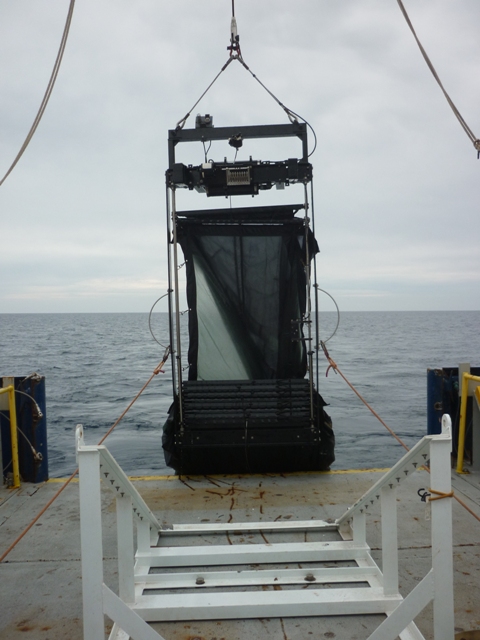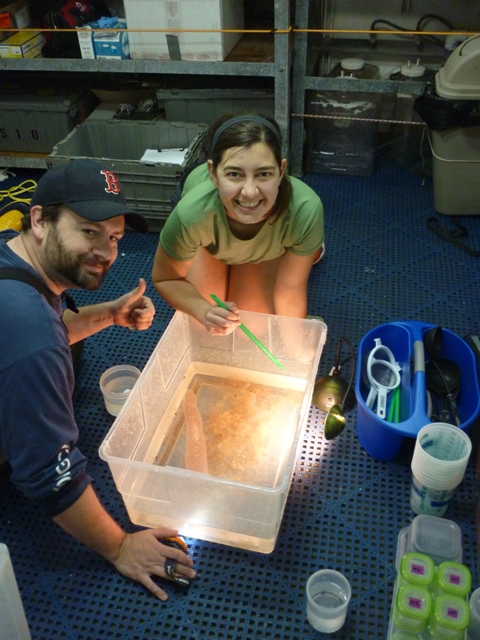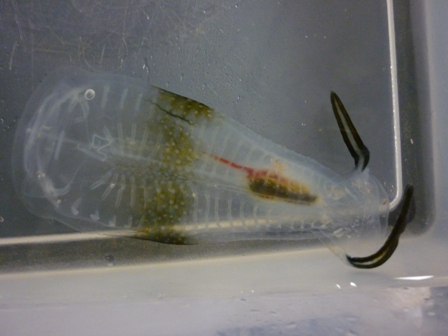On this trip we are using two types of nets to collected critters. One is called a Bongo net. This is actually two nets connected side by side in a metal frame. The connected round frames look like bongo drums. This design allows the nets to attach to the wire without it going through the middle of the net opening, which could damage organisms going into the net. Bongo nets are done in oblique tows, where the net is open on the way down and back up.
The other net we are using is a MOCNESS, known as the MOCNESS monster to the midnight to noon crew. It stands for Multiple Open Closing Net Environmental Sensing System. There are 9 nets stacked on top of one another in a rectangular frame. It is equipped with a temperature and salinity probe, and can have other probes such as oxygen sensors. There are electronics on the net that allow the person running it to use a computer program to close the nets, and get real time readings of information such as temperature and volume of water filtered. The bottom bar of one net is the top bar of the net below it, so when one net opens it is closing the net below it. The MOCNESS is deployed with the lowest net in the stack, net 0, open the entire way down in an oblique tow. Once the net reaches the deepest depth net 1 is open, which closes net 0. The MOCNESS then carries out discrete tows on the way up. An example tow is to send the net down to 400m, and open net 1, towing it at 400m, then the net is brought up to 350 meters and net 2 is open, net 3 is open at 300, net 4 at 250 meters etc, with the final net, net 9 remaining open as it is pulled out of the water. All this is done while paying careful attention to the speed of the boat, the speed of the net coming up, the angle of the net and a few other variables to ensure it is fishing effectively and there is no risk of blowing out one of the nets. The two resident technicians on board, Meghan and Rob have done a wonderful job teaching us how to “fly” the MOCNESS.

The MOCNESS net being recovered. The bars on the bottom of the square are the stacked net bars, with the top net open as it comes out of the water.
Each net has a plastic cod end that everything caught washes into. When we recover the MOCNESS we put each cod end in a labeled bucket and sort them quickly, then put them in the cold room at 8C to ensure the organisms are still in good condition. The nets are small enough so larger organisms are able to avoid it. The critters we are fishing for are zooplankton. Some of the zooplankton we caught so far includes lots of krill, copepods, salps, hatchling squid and others.

Lloyd and Stephanie sorting through a MOCNESS code end, which includes a large pyrosome (midwater tunicate)
Post and pictures by Leanne Elder

